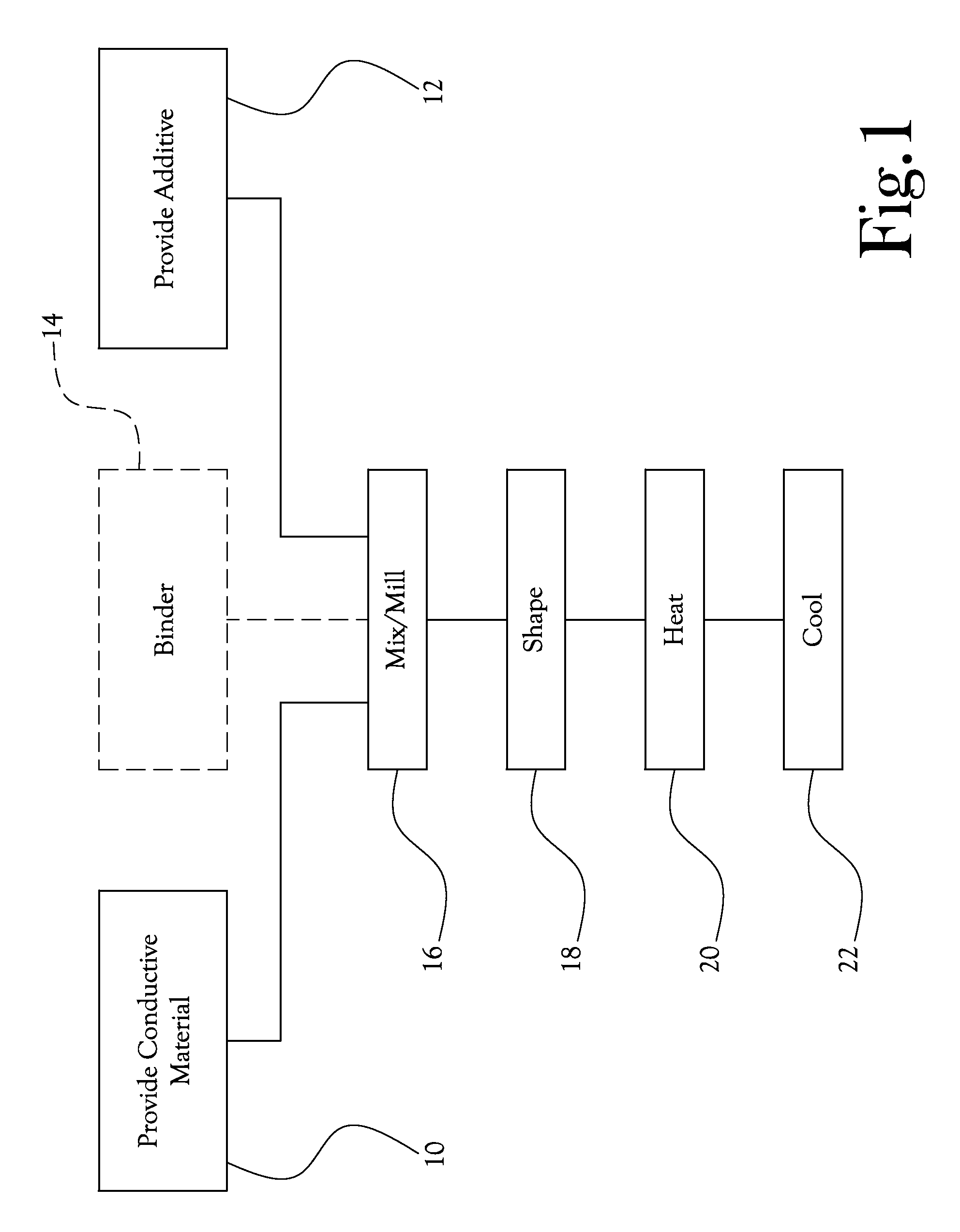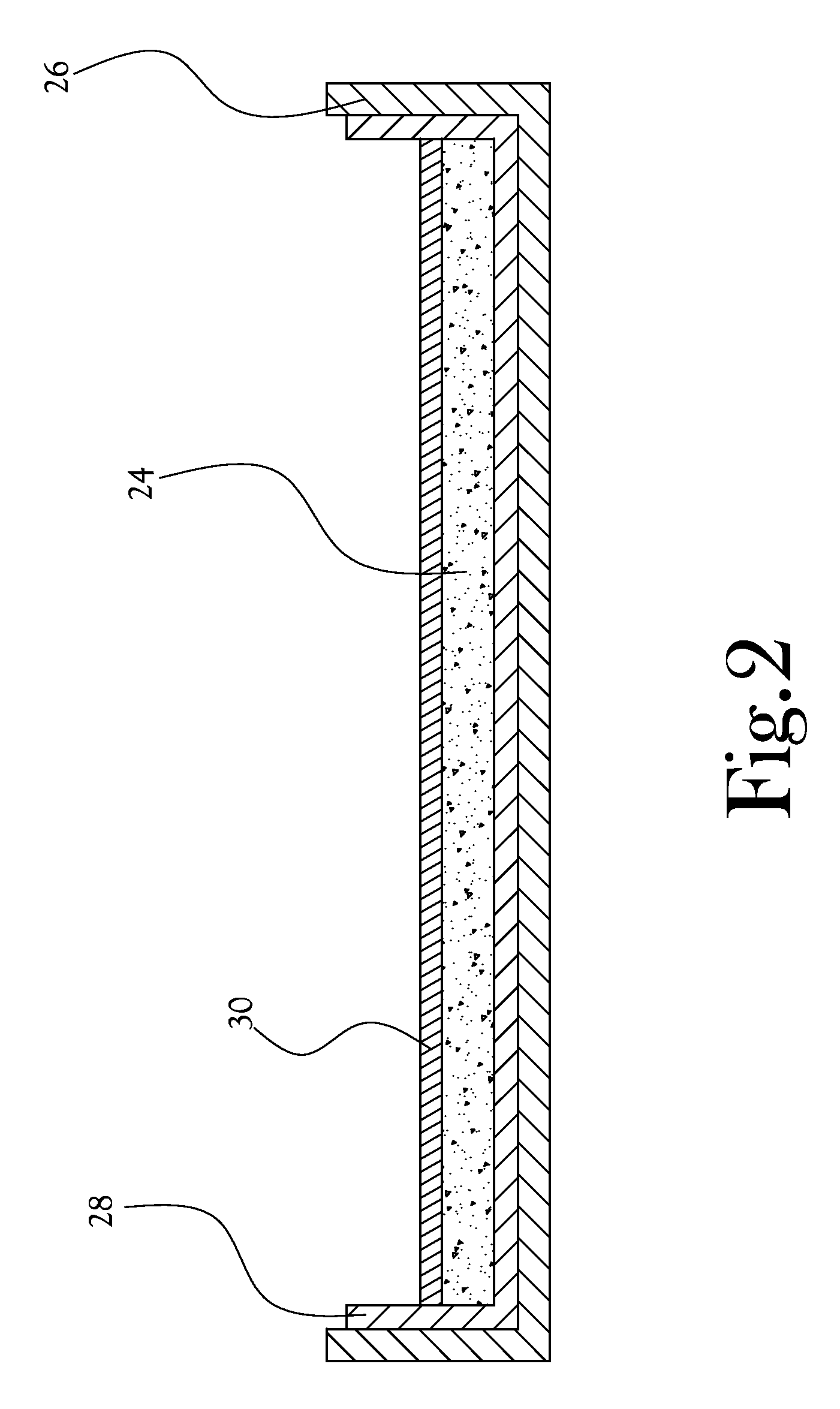Substrate for use in preparing solar cells
a solar cell and substrate technology, applied in the field of photoelectric devices, can solve the problems of bowing damage to silicon wafers, cracking of silicon wafers, and clogging of silicon wafers used as solar cells, and achieve the effects of reducing the overall cte of composite materials, reducing the adverse effects of bowing from cte mismatch, and high conductivity of aluminum
- Summary
- Abstract
- Description
- Claims
- Application Information
AI Technical Summary
Benefits of technology
Problems solved by technology
Method used
Image
Examples
Embodiment Construction
[0022]Disclosed herein are methods and processes for fabricating photoelectric devices, and more particularly, methods and processes for fabricating a back face substrate for a silicon wafer solar cell. In several embodiments, the methods and processes of the present general inventive concept provide for the manufacture of a back face substrate for a silicon wafer solar cell having a relatively high conductivity, and also having a relatively low CTE. According to several features of the present general inventive concept, a back face substrate is provided which includes a finely divided particulate additive bonded in a continuous phase of conductive material, the particulate additive imparting a low CTE to the back face substrate while the continuous phase of conductive material maintains conductivity of the back face substrate. In many embodiments of the present invention, a continuous phase of the back face substrate is provided which comprises aluminum or other such conductive mat...
PUM
| Property | Measurement | Unit |
|---|---|---|
| particle size | aaaaa | aaaaa |
| particle size | aaaaa | aaaaa |
| thickness | aaaaa | aaaaa |
Abstract
Description
Claims
Application Information
 Login to View More
Login to View More - R&D
- Intellectual Property
- Life Sciences
- Materials
- Tech Scout
- Unparalleled Data Quality
- Higher Quality Content
- 60% Fewer Hallucinations
Browse by: Latest US Patents, China's latest patents, Technical Efficacy Thesaurus, Application Domain, Technology Topic, Popular Technical Reports.
© 2025 PatSnap. All rights reserved.Legal|Privacy policy|Modern Slavery Act Transparency Statement|Sitemap|About US| Contact US: help@patsnap.com



